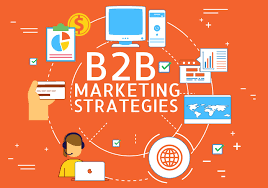In the world of business, companies sell their products and services to different audiences, which requires different marketing and sales approaches. The terms B2B and B2C are often used to categorize these approaches. B2B stands for business-to-business, referring to transactions between one business and another. On the other hand, B2C stands for business-to-consumer, representing transactions between a business and an individual as the end customer.
While both B2B and B2C involve a customer buying something from a company, there are distinct differences between these two approaches that are worth exploring. Understanding these differences is essential for planning effective sales, marketing, and customer service strategies. In this article, we will delve into the key variances in the customer journey, purchase decision-making process, customer engagement, and customer service between B2B and B2C companies.

The Customer Journey: Navigating the Path to Purchase
The customer journey, also known as the path to purchase, differs significantly for B2B and B2C businesses. For B2B companies, the target audience comprises other businesses. For instance, companies like Salesforce, Microsoft, and IBM sell software to enterprises whose employees rely on these tools for their daily work. In the B2B market, purchasing decisions typically involve multiple stakeholders from various departments such as finance, accounting, and procurement. Consensus-building is crucial at each step of the decision-making process. The following steps are commonly observed in the B2B purchase journey:
- Identifying a problem or need
- Exploring different solutions and conducting market research
- Creating a list of requirements
- Selecting a supplier (i.e., the B2B business)
In contrast, B2C companies directly market their products and services to individual consumers. The path to purchase in the B2C market is relatively linear, with customers considering a specific set of products or services, evaluating their options, and making a decision. However, it’s important to note that B2B customer engagement has recently started to resemble B2C practices. With the rise of influencer marketing, over 70% of B2B marketing teams are planning to invest in this strategy. The lines between B2B and B2C customer journeys are becoming blurred.
The Purchase Decision: Factors and Emotional Connections
When making a purchase decision, B2B and B2C customers consider different factors. B2B companies prioritize price, efficiency, productivity, and return on investment (ROI). They focus on building trust, authority, and price leadership. In contrast, B2C companies have more opportunities to establish an emotional connection with their customers. Brands like Nike, Whole Foods, and Petco aim to cater to each customer’s wants by creating entertaining and educational marketing and sales campaigns. B2C customers are highly invested in their own enjoyment and seek products and services that make their lives easier.
While B2B marketing and sales strategies revolve around trust and authority, B2C marketing aims to be memorable. It’s crucial for B2C companies to evoke emotions and create a story that resonates with their customers. This emotional connection enhances brand loyalty and drives repeat purchases.
Customer Engagement: Evolving Approaches
Historically, B2B companies relied on traditional engagement methods such as sales calls, conferences, trade shows, and networking. Building relationships with potential buyers required time and effort. However, in recent years, B2B customer engagement has undergone a transformation, mirroring B2C practices. Influencer marketing has become increasingly prevalent, with more than 70% of B2B marketing teams planning to invest in this strategy. Additionally, B2B companies have recognized the effectiveness of social media as a marketing tool. According to surveys, 75% of B2B buyers and 84% of C-suite executives use social media when making a purchase decision.
B2C companies have long embraced digital marketing channels and social media platforms to engage with their customers. They focus on creating captivating content, leveraging influencers, and fostering two-way communication. B2C brands understand the importance of building a strong online presence and maintaining an active presence on social media platforms.
Customer Service: Tailoring the Approach
B2C and B2B companies also differ in their approaches to customer service. Today’s consumers appreciate an independent, self-service approach to customer support. In the B2C space, individuals expect quick and efficient resolution of issues, the ability to ask questions, and easy access to live agents. B2C companies aim to provide seamless customer experiences by minimizing the need for customers to navigate through long phone menus or search through numerous web pages. Self-service options are highly valued by B2C customers, as they enable them to find answers and solutions independently.
In contrast, B2B transactions are often complex, expensive, and long-lasting. While some self-service options may be appreciated by B2B customers, dedicated support teams are crucial for addressing their specific needs. B2B companies recognize the importance of providing high-touch customer service to mitigate frustration and stress resulting from multiple teams using the same account. They often employ dedicated support teams to handle client issues, ensuring continuity and efficient problem resolution.
Conclusion
In conclusion, B2B and B2C companies employ different marketing and sales approaches to cater to their respective audiences. Understanding the distinctions between these approaches is vital for developing effective strategies that address the unique needs and preferences of each customer segment. B2B companies focus on building trust, authority, and price leadership, while B2C companies strive to create emotional connections and memorable experiences. The customer journey, purchase decision-making process, customer engagement, and customer service all differ between B2B and B2C companies. By recognizing these differences and tailoring strategies accordingly, businesses can better navigate the complexities of today’s market and drive success in their respective domains.



No comments! Be the first commenter?